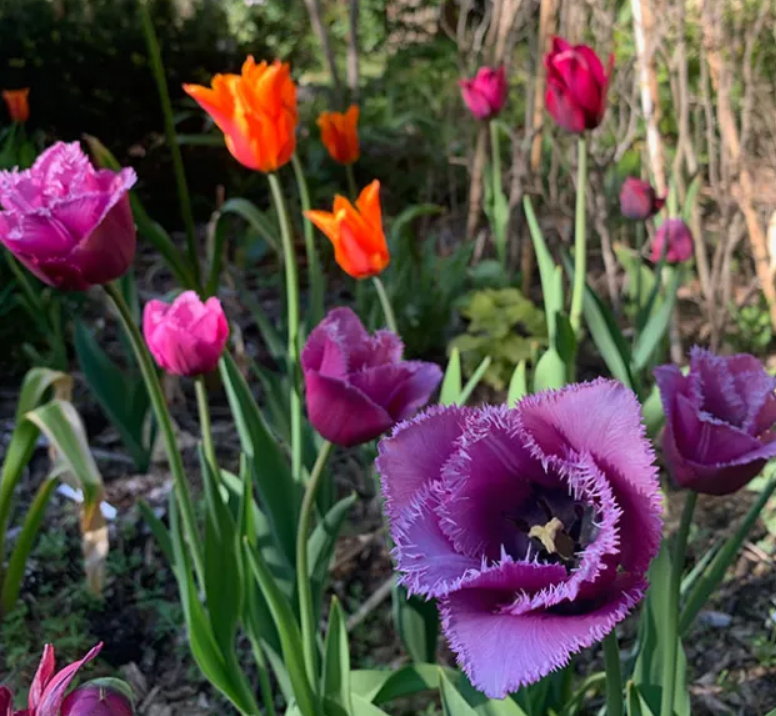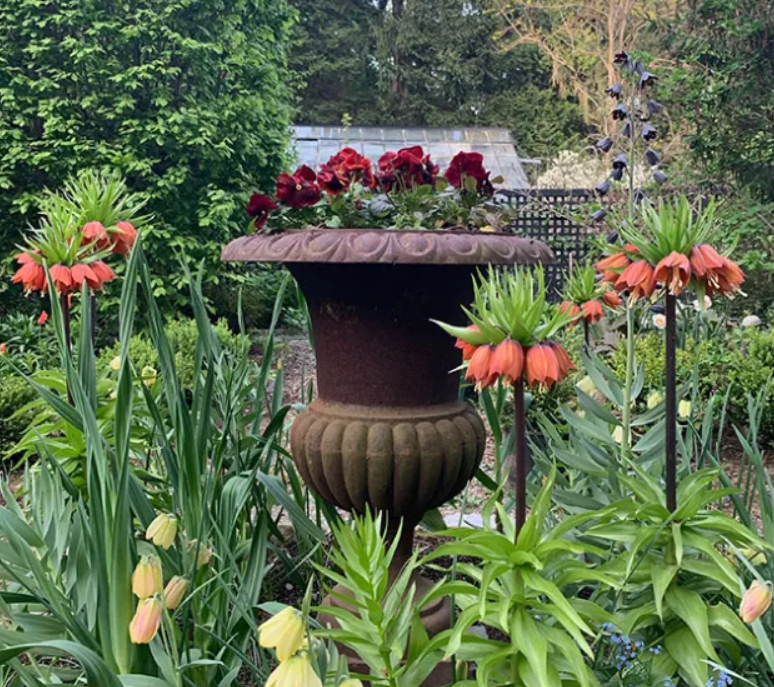The annual vines known as cup and saucer vines are loved by many gardeners. Their large cupped purple or white flowers and distinctive trumpet-shaped corollas look very much like teacups. Many of us have never really given it much thought. Like many familiar garden flowers, the cup-and-saucer vine, or Cobaea scandens, belongs to a much larger family – it has many close relatives in the genus CObaea, all native to South and Central America. However, most are still relatively unknown, if even discovered at all.
My real goal is to solve the problems that many people encounter when trying to grow cup and saucer vines. If you are having trouble germinating or flowering your plants, then perhaps you will find some of the information here useful.
 Cup and saucer vines may need warmth to germinate, but in autumn they can usually withstand a light freeze. Here, a late October snowstorm did little damage to our porch, which is covered with purple and white flowering Cobaea scandens vines.
Cup and saucer vines may need warmth to germinate, but in autumn they can usually withstand a light freeze. Here, a late October snowstorm did little damage to our porch, which is covered with purple and white flowering Cobaea scandens vines.
You know me – I like to ask the obvious questions first. For example, why does almost every garden writer repeat this instruction: “Sow cup and saucer vine seeds vertically.” I think there may be a good reason for this, but I honestly can’t imagine why, since no botanist or peer-reviewed Botanical Journal seems to be able to back this up. In nature, seeds don’t fall vertically on the soil.
Oh, and while you’re looking around for advice, you might also notice that there’s a wide range of depths recommended for sowing seeds, from surface sowing or 1/2 inch deep in complete darkness. Which is the correct method? That’s something you’ll have to figure out for yourself.
Cobaea scandens is not actually an annual plant at all. It is considered a tender perennial. It’s just a fun fact, really, because that shouldn’t change the way most of us grow it.
It is a tropical annual that must be grown in colder climates, but it should serve as a warning to those who live in warmer winter climates where the plant is known to be invasive. As with any vining plant, be careful when planting – step back and they will escape.
Cobaea scandens isn’t even new, although some people may think it is. You might call it an heirloom because it was once more common than it is now, although a new gardening generation is rediscovering it. Like the species I show here, others are rare if not impossible to find. I’m just sharing something to show people the diversity of the tribe and maybe some plant breeders will do some work on the genus.
Cup and saucer vines grow quickly from seed, and while some may read that they need short days of late summer or autumn to flower, this is not the case. Cobaea is considered “sun-neutral” and unlike its neighbours growing in Central America (petunias, larkspur, etc.), these plants do not respond to shorter photoperiods; Cobaea must be mature enough to flower. Therefore, during periods of high UV light in the summer (as in Central America), the plant must grow a certain number of leaves. Therefore, it is believed that light intensity and maturity stimulate the plant to flower.



